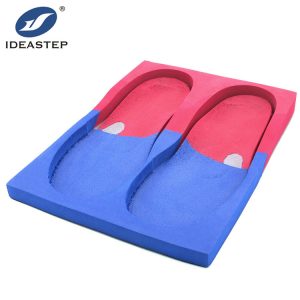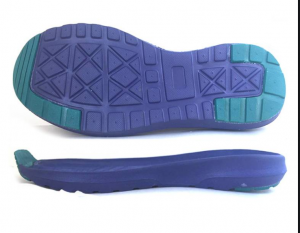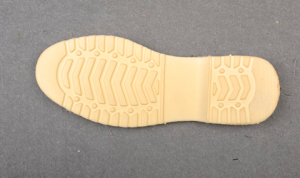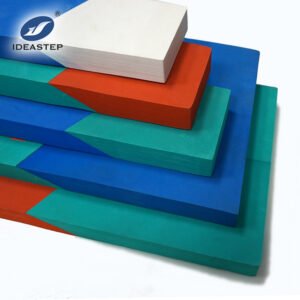MD, EVA
Let me talk about what MD: MODEL or PHYLON is a collective term, then what is PHYLON? PHYLON, commonly known as Feilong, is material for shoe soles and is generally used as a midsole for shoemaking. It is a mixture made of EVA foam that is heated and compressed. The hardness is controlled by the foaming temperature.
EVA: Ethylene Vinyl Acetate. Lightweight and elastic chemical synthetic substance. Outsole material. Marry and sell with RB more! Haha. The price depends on the quantity of fabric used. In addition, the combined manual fee and glue fee are almost 20 yuan. It is also used in composite materials, called foaming. The price can be ignored. However, the factory accounting costs will definitely be added.
Therefore: MD soles must contain EVA, MD soles also are called PHYLON soles. For example, MD=EVA+RB or EVA+RB+TPR and some shoes are RB+PU and so on.

RB, TPU
RB: Rubber, that is, rubber. TPU is mostly used on shoe soles, especially running shoes. It can also be used on helper accessories. The price is more expensive. TPU is divided into natural rubber and synthetic rubber. Natural rubber is mainly derived from the hevea rubber tree. Synthetic rubber is synthesized by artificial methods, using different raw materials (monomers) to synthesize different types of rubber. Butadiene rubber and styrene-butadiene rubber are the output The largest general-purpose synthetic rubber. RB soles have good abrasion resistance, stable shrinkage, and good flexibility, but they have heavy materials and are generally used for outsoles.
PU, PVC
PU: Polyurethane, a high-molecular polyurethane synthetic material, PU is leather material. Too many kinds. Help surface material. Regardless of the size of the sale, there are expensive and cheap! Basically not expensive! There is also a PU bottom. Foreign trade orders are rarely used to this end. PU is a high-density durable material based on foam rubber. It has high density, hardness, wear resistance, and good elasticity, but it has strong water absorption, easy breakage, and yellowing. PU is often used in the midsole of basketball and tennis shoes or the midsole of the back sole. It can also be directly used in the outsole of casual shoes.

PVC: Polyvinylchloride, polyvinyl chloride, is a synthetic material widely used in the world today. PVC is also a leather material. Bargains, but there are also high-end ones. There are also PVC bottoms, cheap products. “Rotten shoes” are often made of PVC. Most of them are cheaper, oil-resistant, abrasion-resistant, and have good insulation properties, but they have poor slip resistance, cold resistance, fold resistance, and poor air permeability.
TPU, TPR, TR
TPU: Thermoplastic Polyurethane, a thermoplastic polyurethane elastomer, is a linear polymer material. The advantage of TPU is that it has good elasticity, but its material is heavy and its shock absorption ability is poor. Commonly used for jogging, slow walking, casual shoe midsole.
TPR: Thermoplastic Rubber, thermoplastic elastomer, also referred to as thermoplastic rubber. TPR outsole name. Different from RB, more fragrant. Smell it with your nose. The price is similar to that of RB. Sometimes high RB5 hair, sometimes low RB5 hair. It not only has the high strength and high resilience of rubber but also can be processed by injection molding. It has multiple characteristics such as environmental protection, a non-toxic, wide range of hardness, excellent coloring, soft-touch, fatigue resistance, good temperature resistance, and superior processing performance. It can be molded by two-shot injection molding or separately molded, but the wear resistance is poor.
TR: The synthetic material of TPE and rubber has the characteristics of many patterns, good hand feeling, bright color, high smoothness, high technical content, etc., and they are often 100% recycled. It is an environmentally friendly sole material.

Regarding the identification of PU, PVC, TPR, TR, RUBBER, etc.:
PU is the lightest and most wear-resistant. The sole of the PU material is easy to recognize, and it is very light to hold in the hand, and the holes on the back of the sole are round. The sole of PVC material is heavier within the hand than TPR. The sole elasticity of TPR material is best than that of PVC. Hold the sole firmly and fall naturally. If it can bounce, it is TPR. The sole of PVC material is cheaper than TPR, but the quality isn’t good, especially in winter, it is easy to interrupt the sole. One of the characteristics of the only PVC material is that there’s no injection hole, and if you smell it together with your nose, it’ll have a smell. It will last for a long time. If it is, it will grow white. The surface of the TR sole is extremely bright. It is harder than the overall TPR sole. The injection hole of TR is more than that of TPR. The injection hole is very special.
Weight: RUBBER (rubber) is that the heaviest, PU and EVA are the lightest. Material: PU is dear, EVA, TPR is moderate, and PVC is that the cheapest. Process: TPR may be a molded product, while PVC must be processed. ABS is generally The material of high heels is expensive and hard.

Application: PVC is typically utilized in linings or non-weight bearing parts, or to make children’s shoes; PU leather is often applied to footwear fabrics or weight-bearing parts. In terms of luggage, PVC leather is more suitable. This is because the things within the bag are different from the feet worn within the shoes and can not emit heat; there’s no got to bear personal weight. The difference between PU and PVC is comparatively easy. From the corners, the PU base fabric is far thicker than PVC, and therefore the feel is different. PU features a softer feel; PVC features a harder feel; it also can be burned with fire. PU The smell is far lighter than that of PVC.
